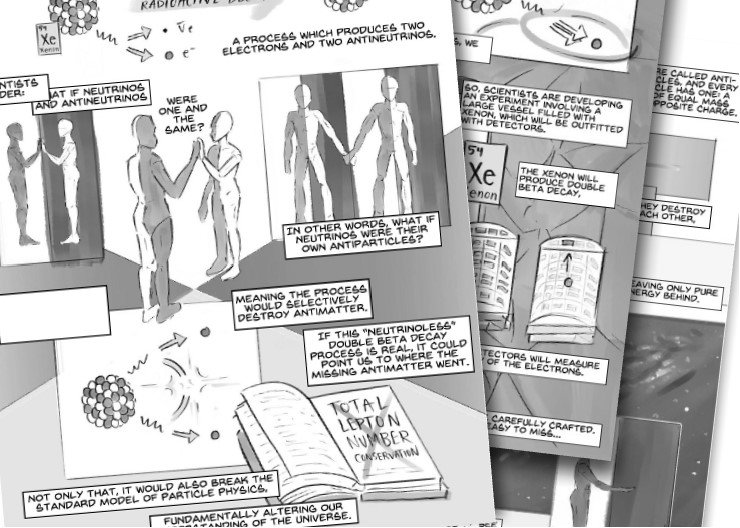Danika Watson
MSc Student, Geography and Planning
CDI Summer Intern, 2023

About Danika
Danika is enrolled as an MSc Candidate in Physical Geography (Geography and Planning Department) at Queen’s University in Kingston, Ontario. Specifically, she studies the chemistry of permafrost soils (in the context of the permafrost carbon feedback). Danika’s research interests are quite broad. She has always been interested in the universe, astrophysics, and planetary science, but came to realize that the planet she finds most interesting is actually Earth. Danika’s interests are now centered around Earth Systems science and biogeochemistry, hence her focus on permafrost soil science. She has always been interested in astrophysics and physics, but never really had the chance to conduct research in that field (Danika’s BSc was in Chemistry, although she admits, she did consider a major in Physics!). The Cross-Disciplinary Internship program provided a way to get a taste of physics research for someone outside of the field of physics, which was a perfect opportunity to try something she had always wanted to experience.
“I think it’s valuable as a scientist to work with different methodologies from different disciplines, to broaden your perspective and stay flexible in the way that you conduct science, so that you don’t become rigid in your ways of approaching problems.” ~Danika Watson
Project: Silicon avalanche photon detector characterization for Astro-particle physics and beyond.
Single photon detectors are widely used in Astro-particle physics for detecting processes yielding light emission (mostly scintillation and Cerenkov). Single Photon Avalanche Diode arrays are single photon detectors offering excellent performances (efficiency, timing) in a very compact package, with ultra-low radioactivity content. They are foreseen to be used in many experiments (e.g. DarkSide-20k, Scintillating Bubble chamber, nEXO, LEGEND). Their use is also being investigated at TRIUMF for applications addressing climate change and medical imaging.
With the analog SPAD array (often called Silicon photo-multiplier, SiPM) technology, Retière’s group contributes to the emergence of digital SPAD arrays, called Photon to Digital Converter (PDC), in collaboration with U.Sherbrooke (QC) and Teledyne-DALSA. PDCs promise to revolutionize single photon detection, providing outstanding performances, while eliminating the need for analog waveform processing and requiring minimum power.
This project supports the optimization of PDCs and to a lesser extent of SiPMs using TRIUMF’s Microscope for the Injection and Emission of Light (MIEL). It is a confocal microscope like fluorescence microscope used in chemistry, with light being injected by a laser through the microscope objective and reemitted light being recorded by a camera after filtering out the laser light. The light production process is completely different however being driven by processes occurring during the avalanche. The project will focus on characterizing the light emission processes that are a major nuisance for SPAD. The project will also include investigation of applications of SPAD array beyond Astro-particle physics such as the Single Photon Air Analyser or possible application to permafrost characterization. Danika’s past experience with optical spectroscopy and microscopy (theory, operation and data analysis) was valuable when working on the confocal microscope as she was familiar with photochemical phenomena that occur in the SiPM.
Danika’s internship involved measurements using the Microscope for Injection and Emission of Light (MIEL) setup at TRIUMF. She used the setup to test the time response of photon detection by a photon to digital convertor (PDC), using variations of different experimental parameters.
“I didn’t realize just how many moving parts were involved with making large-scale physics experiments such as DarkSide and nEXO happen. Particle physics research requires a ton of coordination among team members, effective organization and very high attention to detail – I wasn’t aware of this beforehand.”

Knowledge Mobilization
Danika took the opportunity to work her science communication skills during her internship. Upon completing the internship, she remarked that, “communicating science outside of my own field added an extra challenge. There was a ton of flexibility and creative freedom with this project – I enjoy art and illustration, so I created a comic strip to communicate my research. It was really fun and interesting to work on!”
Danika created a zine of her summer work, entitled “How to Probe the Nature of the Universe” that is available for sharing. Since creating the zine, Danika has shared hundreds of copies with the public, at physics undergraduate conferences, as well as the Montreal Expozine 2023.
What is a zine, you ask? A zine is typically a non – commercial, non professional publication, similar to a magazine but zines do not exist to make a profit but instead to add other, sometimes unheard voices into the world.
